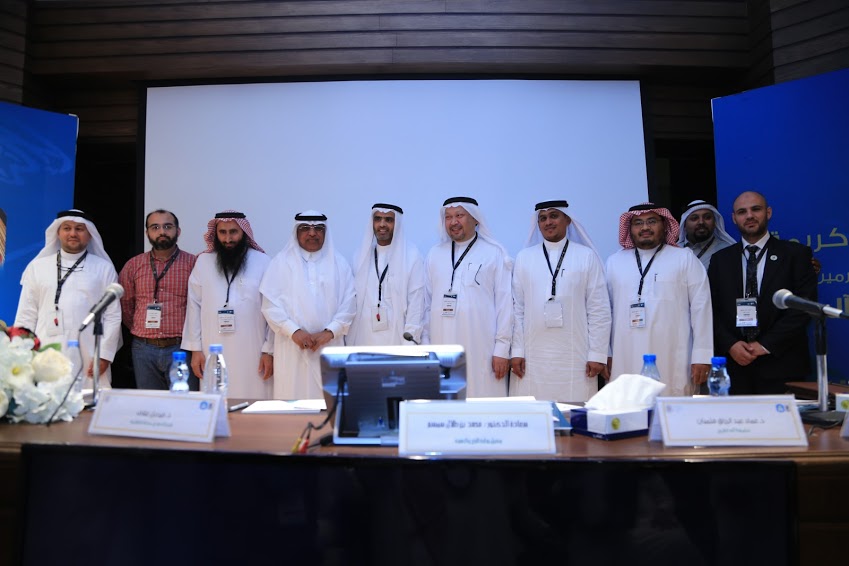
The 7th scientific session of the the 17th round of the Hajj and Umrah meeting was held to discuss "Technologies and Applications" with participation of experts and researchers from Saudi universities and research centers under the supervision of Deputy Minister Designate of Hajj for Planning and Development Dr. Mohamed T. Semsem. The session took up a number of research subjects that focused on suggested solutions for issues and challenges facing pilgrims. CEO of Wadi Makkah Company Dr. Faisal A. Allaf discussed a paper on the commercial transformation model of the company from research to the real market. Dr. Allaf briefed the meeting on Wadi Makkah's experience in changing its theoretical researches into real technologies and patented ideas under a specific strategy according to the National Transformation Program 2020 and the Saudi Vision 2030. In this regard, he said the company signed a number of agreements with government sector to produce technologies and software in various industries.
In the same vein, researchers Abdo M. Gabbary, Mohamed Al-Salem (from Jazan University) and Siegen Song from University of Missouri, USA provided a paper that discusses predicting movement of crowds and providing protection from collision. Also, they previewed means to avoid negative impacts of the over-crowded sites during Hajj season which are mainly attributed to wrong-direction movement of pilgrims. They suggested a scheme to be used for organizing movement depending on a new technology named Bluetooth Low Energy-BLE. The new system includes a SIM card to guide pilgrims by receiving signals from small cell towers which send short messages to the receivers.
The necessary protocols and algorithms were developed to be used in SMSs by the BLE and towers before processing in the central points.
In another paper, Dr. Ali Hassan Al Qahtany from the College of Communication and Information in Riyadh suggested the establishment of a wireless Large-Scale Antenna Systems for management during Hajj season. The researcher said a Massive MIMO-dependent wide-range WSN was created and linked to fixed and mobile devices to move huge quantities of high-quality data that makes movement of people during hajj season easier.
In the meantime, researchers Dr. Mohamed Kh. Shambour, Essam A. Khan, and Ahmed E. Al Salipy from the Custodian of the Two Holy Mosques Institute for Hajj and Umrah Researches in Umm Al Qura University (UQU) have presented a paper titled "Mina camps auto-distribution to increase capacity and efficiency". In this study, they reiterated necessity of using optimization techniques to improve distribution process in Mina. Under these techniques, the distribution shall take a number of factors into consideration. These factors are divided into hard and soft constraints, they said, adding this may help in optimizing and increasing the capacity of Mina which is a critical point in the Hajj organization in general for its narrow space needed for pilgrims throughout only three successive days.
From the College of Computer and Information Systems in UQU, Dr. Emad A. Felemban, Khaled S. Al Qahtany, Abdullah N. Hosawy and Abdullah S. Al Shahry put another paper for discussion under the title "building a simulation model for crown management system to analysis movement around Makkah". Under this study, researchers developed a changeable plan that can build the model using MassMotion application.
The model project has started by collecting the necessary data from CCTV cameras and analysis to get a formula for the movement of pilgrims. This formula is used to make a simulation model for entry to Hajr Ismail, start line for going around Kaaba, Ibrahim Shrine, stopping in front of the black stone and the gate of Kaaba. The research team has studied results of the moving crowds.
Another paper, presented by researchers Sultan Khan, Anas Ba-Salama, Akram Nour, Mohamed Amin, Saleh Ba-Salama, and Shouaib Khan from Wadi Makkah, was discussed under the theme "Analysis System Development for Crowd Management at the Holy Mosque." In the study, they drew attention to a vision and framework of automatic analysis of crown management video files during Hajj season in Makkah and Madina in order to extract lessons about the spatial and temporal characteristics.
In their analysis, they used data for speed and direction of moving crowds under the movement system. They expected a complete plan for a computerized vision would be available to measure mass numbers and densities.